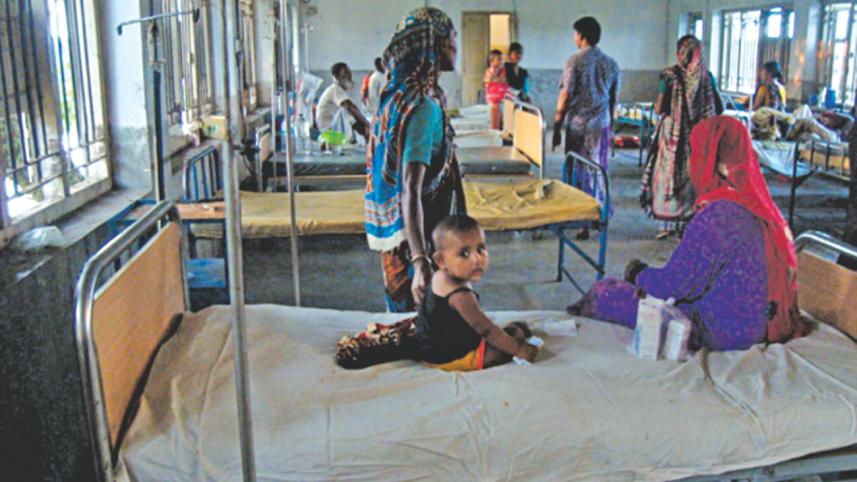A hospital with scanty facilities

It's a hospital with 31 beds but most of them remain empty all year round. Its only X-ray machine doesn't work. There's no radiologist or pathologist at the hospital to conduct any diagnosis test.
This is the picture of Itna Upazila Health Complex in Kishoreganj, the only hospital in the 401.94 square kilometer area inhabited by a population of over 1.6 lakh.
"Our only X-ray machine does not work. Also, there's no technician to operate the machine," said Dr Israil Hussain, senior physician of the hospital.
Patients have to go to the district headquarter to get any test of Xray done, he said.
"We have an ECG machine but we cannot operate that. So, cardiac patients have to go straight to Kishoreganj district hospital if they need immediate care."
"We do not get any serious patients here. They are usually taken to Kishoreganj hospital," Dr Israil added.
Unless compelled to, people seeking treatment for serious diseases try to avoid the hospital.
Even if someone wants to go there, they find it hard to reach the hospital due to a shockingly poor communication infrastructure.
The haor area remains under water for about six months a year, boats are the only means of communication during that time. And in the dry season, people have to walk over miles of lowlands for hours to reach the nearest road.
If a pregnant woman faces delivery complications, she has to be taken to the district headquarters, a three-hour engine boat and one-hour bus ride from Itna, said local people.
Most births take place at home and are assisted by midwives, who in many cases have no formal training, this correspondent was told during a recent visit to the haor upazila.
"The government urgently needs to introduce floating hospitals and boat ambulances for the region," said Dr Israil Hussain of Itna health complex.
Concern Worldwide, a non-government organisation, has been working in the haor regions for over two decades and training midwives to ensure safe motherhood.
"It is hard for expecting mothers in the region to avail basic healthcare facilities, mainly due to communication problems. As an attempt to ensure safe motherhood, we have so far trained around 200 women as midwives," said Asif Imran Khan, advocacy officer of Concern Worldwide.
The Haor Master Plan 2012 said only 13.4 percent women in the haor region have access to trained birth attendants where the countrywide average is 18 percent.
Due to the lack of healthcare services facilities, the average infant mortality rate and child mortality rate per 1,000 infants were 57 and 76 against the national average of 49 and 64.

 For all latest news, follow The Daily Star's Google News channel.
For all latest news, follow The Daily Star's Google News channel.